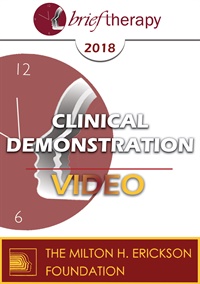
- Average Rating:
- Not yet rated
- Topic Areas:
- Utilization | Clinical Demonstrations | Psychotherapy | Therapist Development | Age Regression | Language of Hypnosis | Therapeutic Relationship
- Bundle(s):
- Art of Psychotherapy - Utilization Series
- Categories:
- Art of Psychotherapy
- Faculty:
- Jeffrey Zeig, PhD
- Course Levels:
- Master Degree or Higher in Health-Related Field
- Duration:
- 2 Hours 15 Minutes
- Format:
- Audio and Video
- Original Program Date:
- Jul 05, 2020
- Short Description:
- Our demonstration subject for session three has two presenting issues - an undercurrent of sadness that seems to be everpresent, and a difficulty communicating about financial situations in her life. Dr. Zeig starts off the session by speaking Spanish, Karina’s native language. This simple technique puts Karina quickly at ease and sets the tone for the session. By inducing a hypnotic state Dr Zeig is able to do a quick age regression, and through utilizing a number of linguistic techniques - recursion, speaking in triplicate, altering tempo and tone of voice - he was able to seed therapeutic goals and create motivation for change.
- Price:
- $79.00 - Base Price

- Average Rating:
- Not yet rated
- Topic Areas:
- Short Courses | Brief Therapy | Language of Hypnosis | Unconscious Processes
- Categories:
- Brief Therapy Conference | Brief Therapy Conference 2002
- Faculty:
- Norma Barretta, PhD | Phillip Barretta, MA, MFT
- Duration:
- 1:19:35
- Format:
- Audio Only
- Original Program Date:
- Dec 12, 2002
- Short Description:
- CBBT focuses on the person's own resources as the basic component of developing the ability to create lasting changes. We keep insight out of sight and focus on behavioral shifts and updates to beliefs. Unconscious process is a major contributor to lasting solutions and the ability to use hypnotic linguistic patterns of "temporary" (in reference to the present state) and "permanent" (in reference to the solution leading to the desired state) is an essential element of the model.
- Price:
- $15.00 - Base Price
- Average Rating:
- Not yet rated
- Topic Areas:
- Fundamentals of Hypnosis | Hypnosis | Language of Hypnosis | Indirection
- Categories:
- Brief Therapy Conference | Brief Therapy Conference 2008
- Faculty:
- Stephen Lankton, MSW
- Course Levels:
- Master Degree or Higher in Health-Related Field
- Duration:
- 2:09:12
- Format:
- Audio and Video
- Original Program Date:
- Dec 12, 2008
- Short Description:
- The rationale for the use of indirection will be presented. In this session you will learn and practice the construction of fundamental forms of indirection language. Participants will practice five forms of indirect suggestions and three forms of binds. A demonstration using these forms will illustrate the implementation of this set of language techniques for the induction and treatment process. The use of indirect suggestions in further treatment will be outlined.
- Price:
- $29.00 - Base Price
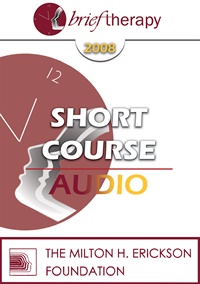
- Average Rating:
- Not yet rated
- Topic Areas:
- Short Courses | Brief Therapy | Communication | Ericksonian Hypnosis and Therapy Techniques | Hypnosis | Language of Hypnosis
- Categories:
- Brief Therapy Conference | Brief Therapy Conference 2008
- Faculty:
- Kate Cohen-Posey, MS
- Duration:
- 1:30:12
- Format:
- Audio Only
- Original Program Date:
- Dec 11, 2008
- Short Description:
- A person may say, "Don't ever . . . lie to me again!" or "You can . . . always tell me the truth." In either case, hypnotic language has been used to evoke undesirable or desirable behavior. This workshop will take Ericksonian linguistic patterns and export them into everyday environments. Exercises, role-plays, and brain storming will show how to make lasting changes in speech habits when addressing resistant family members and co-workers.
- Price:
- $15.00 - Base Price
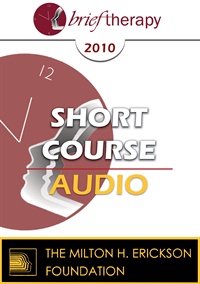
- Average Rating:
- Not yet rated
- Topic Areas:
- Children and Adolescent Therapy | Short Courses | Brief Therapy | Language of Hypnosis
- Categories:
- Brief Therapy Conference | Brief Therapy Conference 2010
- Faculty:
- Marilyn Wedge
- Duration:
- 1:05:37
- Format:
- Audio Only
- Original Program Date:
- Dec 09, 2010
- Short Description:
- The language a therapist uses to conceptualize and treat a problem determines whether or not that problem can be resolved effectively. Plato’s story of the cave, where the inhabitants see only shadows, is a useful metaphor for how the language of therapy can generate either confusion or clarity. The workshop will teach a method of effectively treating severe problems of children and adolescents, using an invariant opening question, strategic dialogue and metaphorical techniques.
- Price:
- $15.00 - Base Price
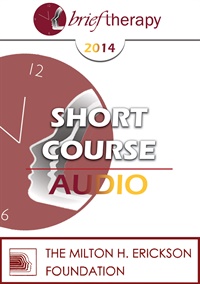
- Average Rating:
- Not yet rated
- Topic Areas:
- Short Courses | Brief Therapy | Hypnosis | Language of Hypnosis | Trauma
- Categories:
- Brief Therapy Conference | Brief Therapy Conference 2014
- Faculty:
- Norma Barretta, PhD | Phillip Barretta, MA, MFT
- Duration:
- 1:12:29
- Format:
- Audio Only
- Original Program Date:
- Dec 11, 2014
- Short Description:
- BT14 Short Course 14 - Tapping into Reserves You Never Knew You Had Using Your Personal Power - Norma Barretta, PhD and Philip Barretta, MA, MFT In the brief treatment of trauma, using hypnosis, not only amplifies the benefits, it also shortens the treatment time. Creating just the right metaphor, choosing the best language patterns, and using the patient’s ( as well as the therapist's) own resources can intensify and direct the deep desire for healing far more quickly than traditional therapy ever could. Tapping into their mutual personal power, enables the intervention. A demonstration of anchoring resources will be part of this short course.
- Price:
- $15.00 - Base Price
Credit available - Click Here for more information
- Average Rating:
- Not yet rated
- Topic Areas:
- Clinical Demonstrations | Anxiety | Hypnosis | Brief Therapy | Language of Hypnosis
- Bundle(s):
- Learning Track - Using Hypnosis
- Categories:
- Brief Therapy Conference | Brief Therapy Conference 2018 | Online Continuing Education
- Faculty:
- Lynn Lyons, LICSW
- Course Levels:
- Master Degree or Higher in Health-Related Field
- Duration:
- 58:59
- Format:
- Audio and Video
- Original Program Date:
- Dec 08, 2018
- Short Description:
- Using hypnosis to help anxious people relax and feel calm is a great start, but hypnosis offers other valuable opportunities to disrupt the patterns of anxiety, create a different relationship to thoughts and physical symptoms , and to shift the client from avoidance into action.
- Price:
-
Sale is $29.00
price reduced from Base Price - $59.00
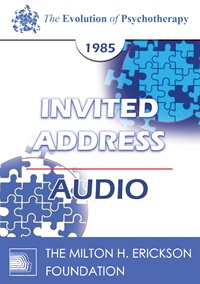
- Average Rating:
- Not yet rated
- Topic Areas:
- Invited Addresses | Language of Hypnosis | Mind-Body | Hypnosis | Psychotherapy
- Categories:
- Evolution of Psychotherapy | Evolution of Psychotherapy 1985
- Faculty:
- Ernest Rossi, PhD
- Duration:
- 1 Hour 10 Minutes
- Format:
- Audio Only
- Original Program Date:
- Dec 11, 1985
- Short Description:
- Educational Objectives: To know recent mind/body research: Psychoneuroimmunology, psychosomatics and transpersonal experience To use mind/body connections in psychotherapy
- Price:
- $15.00 - Base Price
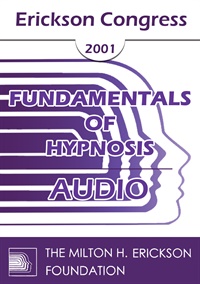
- Average Rating:
- Not yet rated
- Topic Areas:
- Fundamentals of Hypnosis | Hypnosis | Language of Hypnosis
- Categories:
- Erickson Congress 2001 | Erickson Congress
- Faculty:
- Betty Alice Erickson, MS, LPC, LMFT
- Duration:
- 1:48:16
- Format:
- Audio Only
- Original Program Date:
- Dec 07, 2001
- Short Description:
- IC01 Fundamental Hypnosis 02 - Speaking the Client's Language: Rapport for Change - Betty Alice Erickson, MS, LPC, LMFT
- Price:
- $15.00 - Base Price
Tags: Fundamentals of Hypnosis
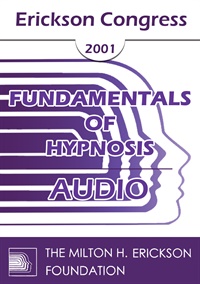
- Average Rating:
- Not yet rated
- Topic Areas:
- Fundamentals of Hypnosis | Hypnosis | Language of Hypnosis
- Categories:
- Erickson Congress 2001 | Erickson Congress
- Faculty:
- Jeffrey Zeig, PhD
- Duration:
- 2:16:58
- Format:
- Audio Only
- Original Program Date:
- Dec 08, 2001
- Short Description:
- Practitioners of hypnosis use a special grammar to elicit a special phenomenology. These linguistic forms can be applied to empower over psychotherapy even without formal trance. There will be lecture, demonstrations and practice.
- Price:
- $15.00 - Base Price
Tags: Fundamentals of Hypnosis
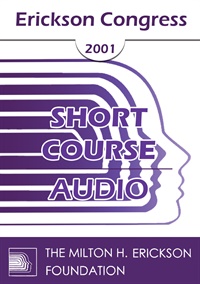
- Average Rating:
- Not yet rated
- Topic Areas:
- Short Courses | Strategic Therapy | Language of Hypnosis | Therapist Development
- Categories:
- Erickson Congress 2001 | Erickson Congress
- Faculty:
- Donald Miretsky, M.Ed
- Duration:
- 1:02:34
- Format:
- Audio Only
- Original Program Date:
- Dec 06, 2001
- Short Description:
- IC01 Short Course 16 - Advanced Strategic Therapy for Beginners: Therapy in the Language Experience of Human Beings - Donald Miretsky, MEd, CPC This short course will teach advanced conceptualization and technique by summarizing it in the language experience of human beings. This means teaching a four-step approach incorporating everyday language, common sense concepts and humor so beginners as well as experienced therapists can learn and apply the skills. This approach is demonstrated by case and video presentation of severely disordered children.
- Price:
- $15.00 - Base Price
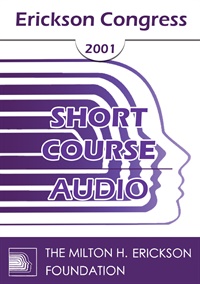
- Average Rating:
- Not yet rated
- Topic Areas:
- Short Courses | Ericksonian Psychotherapy | Psychotherapy | Language of Hypnosis
- Categories:
- Erickson Congress 2001 | Erickson Congress
- Faculty:
- Blanca Iris Corzo, MA
- Duration:
- 56:51
- Format:
- Audio Only
- Original Program Date:
- Dec 06, 2001
- Short Description:
- IC01 Short Course 37 - Integrating Two Psychotherapy Approaches with Different Philosophical Positions: Ericksonian Psychotherapy and Collaborative Language - Blanca Iris Corzo, MA As an Ericksonian psychotherapist, how do I open up a space to new frameworks that propose different and even opposite ideas, such as Ericksonian Psychotherapy and Collaborative Language? A general review of the main points that define both approaches will be done in order to know the differences and similarities of both approaches. This course is aimed at inviting these two positions to co-exist effectively during the psychotherapeutic process.
- Price:
- $15.00 - Base Price

- Average Rating:
- Not yet rated
- Topic Areas:
- Workshops | Language of Hypnosis | Therapist Development
- Categories:
- Erickson Congress 2001 | Erickson Congress
- Faculty:
- Norma Barretta, PhD | Phillip Barretta, MA, MFT
- Duration:
- 2:02:34
- Format:
- Audio Only
- Original Program Date:
- Dec 07, 2001
- Short Description:
- IC01 Workshop 26 - Watch Your Tongue: Language is Slippery - Norma Barretta, PhD and Philip Barretta, MA, MFT Many people stumble through life stuck in linguistic traps which imprison them. Language influences outcomes. The words we select in working with patients have a power beyond the wildest imagination. Ambiguity is a most useful linguistic tool. It enables the listener to assign relevant meaning. The Barrettas will demonstrate and have participants experience everal hypnotically useful language patterns.
- Price:
- $15.00 - Base Price

- Average Rating:
- Not yet rated
- Topic Areas:
- Topical Panels | Hypnosis | Language of Hypnosis
- Categories:
- Erickson Congress | Erickson Congress 2004
- Faculty:
- Douglas Flemons, PhD | Brian Grodner, PhD | Annellen M. Simpkins, PhD | Alexander Simpkins, PhD
- Duration:
- 1:01:30
- Format:
- Audio Only
- Original Program Date:
- Dec 03, 2004
- Short Description:
- IC04 Topical Panel 08 - Hypnotic Language - Doug Flemons, Ph.D., Brian Grodner, Ph.D., Annellen Simpkins, Ph.D., Alexander Simpkins, Ph.D.
- Price:
- $15.00 - Base Price
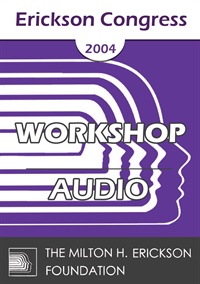
- Average Rating:
- Not yet rated
- Topic Areas:
- Workshops | Psychotherapy | Solution Oriented Approach | Language of Hypnosis
- Categories:
- Erickson Congress | Erickson Congress 2004
- Faculty:
- Steve De Shazer, MSSW | Yvonne Dolan, MA
- Duration:
- 1:58:30
- Format:
- Audio Only
- Original Program Date:
- Dec 02, 2004
- Short Description:
- This workshop will demonstrate through lecture, videotapes case examples and practice exercises how a working knowledge of "language games" can allow therapists to appropriately, respectfully and effectively address emotions in the context of psychotherapy and conversely, how misuse of language could potentially lead to a variety of negative consequences including client disenfranchisement, disempowerment, reification of problems and iatrogenic symptoms.
- Price:
- $15.00 - Base Price
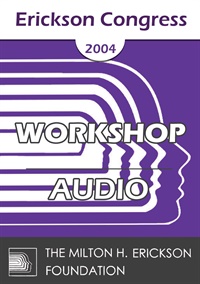
- Average Rating:
- Not yet rated
- Topic Areas:
- Workshops | Energy Psychology | Hypnosis | Psychology | Language of Hypnosis
- Categories:
- Erickson Congress | Erickson Congress 2004
- Faculty:
- Carol Kershaw, EdD | Brian Grodner, PhD | Brent Geary, PhD
- Duration:
- 2:42:48
- Format:
- Audio Only
- Original Program Date:
- Dec 04, 2004
- Short Description:
- To achieve optimal health and functioning, we need our minds to be in a relaxed and focused state. This demonstration uses imagery, color, sound, light, metaphor and transfer of energy to achieve change in states of consciousness for mental and physical fitness.
- Price:
- $15.00 - Base Price
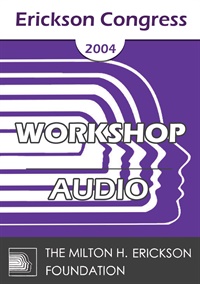
- Average Rating:
- Not yet rated
- Topic Areas:
- Workshops | Psychotherapy | Language of Hypnosis
- Categories:
- Erickson Congress | Erickson Congress 2004 | Pioneers in Couples and Family Therapy
- Faculty:
- Richard Fisch, MD
- Duration:
- 2:27:24
- Format:
- Audio Only
- Original Program Date:
- Dec 05, 2004
- Short Description:
- Dr. Richard Fisch explores the critical role of language in therapy, emphasizing techniques to enhance hope, manage non-compliance, and adapt to clients' communication styles. He discusses the shift from psychotherapy to psychopharmacology in psychiatry training and shares case studies, including strategies for anxiety treatment. Fisch illustrates the effectiveness of precise language through anecdotes and practical interventions, offering valuable insights for clinicians.
- Price:
- $15.00 - Base Price
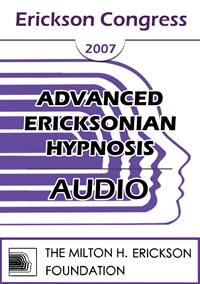
- Average Rating:
- Not yet rated
- Topic Areas:
- Workshops | Confusion Technique | Hypnosis | Indirection | Language of Hypnosis | Binds | Suggestion
- Categories:
- Erickson Congress | Erickson Congress 2007
- Faculty:
- Stephen Lankton, MSW
- Duration:
- 2:50:39
- Format:
- Audio Only
- Original Program Date:
- Dec 10, 2007
- Short Description:
- Participants will be guided through several exercises to help them learn and practice the construction of four forms of confusion technique, bring the number of indirect suggestion to six and the number of therapeutic binds to four. A demonstration using these forms will illustrate the implementations of this set of language techniques for the induction and treatment process.
- Price:
- $15.00 - Base Price
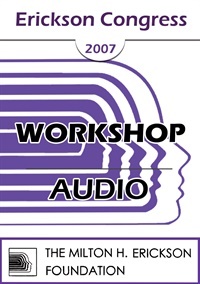
IC07 Workshop 26 - Indirect Suggestions & Therapeutic Binds in Hypnosis - Stephen Lankton, MSW, DAHB
- Average Rating:
- Not yet rated
- Topic Areas:
- Workshops | Ericksonian Hypnosis and Therapy Techniques | Hypnosis | Binds | Indirection | Language of Hypnosis | Suggestion
- Categories:
- Erickson Congress | Erickson Congress 2007
- Faculty:
- Stephen Lankton, MSW
- Duration:
- 1:53:33
- Format:
- Audio Only
- Original Program Date:
- Dec 07, 2007
- Short Description:
- This technique is among the most crucial to good therapy. Participants will be guided through several exercises to help them learn and practice the construction of six forms of indirect suggestions and four forms of binds. A demonstration using these forms will illustrate the implementation of this set of language techniques for the induction and treatment process. The use of indirect suggestions in further treatment will be outlined.
- Price:
- $15.00 - Base Price
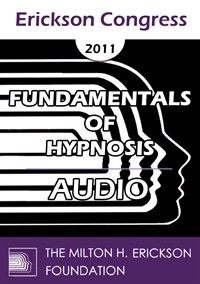
- Average Rating:
- Not yet rated
- Topic Areas:
- Hypnosis | Fundamentals of Hypnosis | Resistance | Language of Hypnosis
- Categories:
- Erickson Congress | Erickson Congress 2011
- Faculty:
- Dan Short, PhD
- Duration:
- 1:39:24
- Format:
- Audio Only
- Original Program Date:
- Dec 09, 2011
- Short Description:
- Although your clientele may be voluntarily seeking treatment, you will occasionally encounter individuals who are strongly opposed to outside influence. Standard techniques and procedures often fail to achieve results with these individuals. This workshop will describe the type of approach that achieves positive outcomes in cases of complex resistance.
- Price:
- $15.00 - Base Price
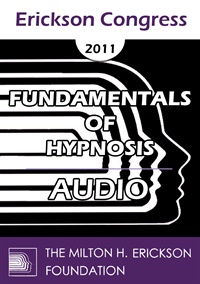
- Average Rating:
- Not yet rated
- Topic Areas:
- Hypnosis | Fundamentals of Hypnosis | Resistance | Language of Hypnosis
- Categories:
- Erickson Congress | Erickson Congress 2011
- Faculty:
- Jeffrey Zeig, PhD
- Duration:
- 1:20:58
- Format:
- Audio Only
- Original Program Date:
- Dec 09, 2011
- Short Description:
- The language of hypnosis is an expressive grammar oriented to eliciting changes in state, mood, and perspective. We will study the use of truisms, yes-sets, presuppositions, dissociation statements, and implied causatives. Lecture, demonstration, practice.
- Price:
- $15.00 - Base Price
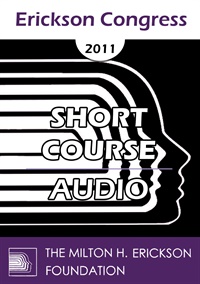
- Average Rating:
- Not yet rated
- Topic Areas:
- Short Courses | Brief Therapy | Children and Adolescent Therapy | Language of Hypnosis | Ericksonian Hypnosis and Therapy Techniques | Metaphors | Utilization
- Categories:
- Erickson Congress | Erickson Congress 2011
- Faculty:
- Marilyn Wedge
- Duration:
- 1:00:05
- Format:
- Audio Only
- Original Program Date:
- Dec 09, 2011
- Short Description:
- The language a therapist uses to conceptualize and treat a problem determines whether or not that problem can be resolved effectively. This workshop introduces a new model, child-focused family therapy, which is a respectful and effective technique for treating severe problems of children. This method includes a precisely worded opening question, a strategic dialogue with parents and children, Erickson’s principle of utilization, and the use of metaphor to open up solutions.
- Price:
- $15.00 - Base Price
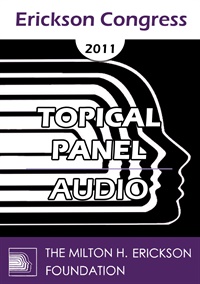
- Average Rating:
- Not yet rated
- Topic Areas:
- Hypnosis | Topical Panels | Language of Hypnosis
- Categories:
- Erickson Congress | Erickson Congress 2011
- Faculty:
- Norma Barretta, PhD | Rubin Battino, MS | Stephen Gilligan, PhD | Phillip Barretta, MA, MFT
- Duration:
- 59 Minutes
- Format:
- Audio Only
- Original Program Date:
- Dec 07, 2011
- Short Description:
- Topical Panel on Hypnotic Language, featuring Norma Barretta, Phillip Barretta, Rubin Battino and Stephen Gilligan.
- Price:
- $20.00 - Base Price
Tags: Hypnosis Language of Hypnosis
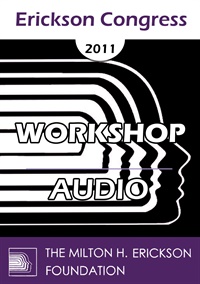
- Average Rating:
- Not yet rated
- Topic Areas:
- Trance | Workshops | Language of Hypnosis
- Categories:
- Erickson Congress | Erickson Congress 2011
- Faculty:
- John Lentz, D. Min.
- Duration:
- 59 Minutes
- Format:
- Audio Only
- Original Program Date:
- Dec 07, 2011
- Short Description:
- Useful techniques of Altering Trances that block clients from achieving their goals will be discussed, and demonstrated. These techniques do not require knowledge of hypnosis to employ but were designed and draw from hypnotic understanding of language. This approach is compatible with other treatment modalities, and simply gives participants
- Price:
- $20.00 - Base Price
Tags: Language of Hypnosis Trance
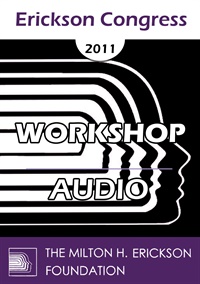
- Average Rating:
- Not yet rated
- Topic Areas:
- Hypnosis | Workshops | Language of Hypnosis | Hypnotic Induction
- Categories:
- Erickson Congress | Erickson Congress 2011
- Faculty:
- Jeffrey Zeig, PhD
- Duration:
- 59 Minutes
- Format:
- Audio Only
- Original Program Date:
- Dec 07, 2011
- Short Description:
- Language is both informative and expressive. It is the expressive component that elicits changes in emotion, sensation, "state," and physiology. Para-verbal forms will be described, including facial expression; voice modulation; gestures; sound effects; behavioral modeling; social mimicry; hesitations, and proximity. Lecture, demonstration, exercises.
- Price:
- $20.00 - Base Price



